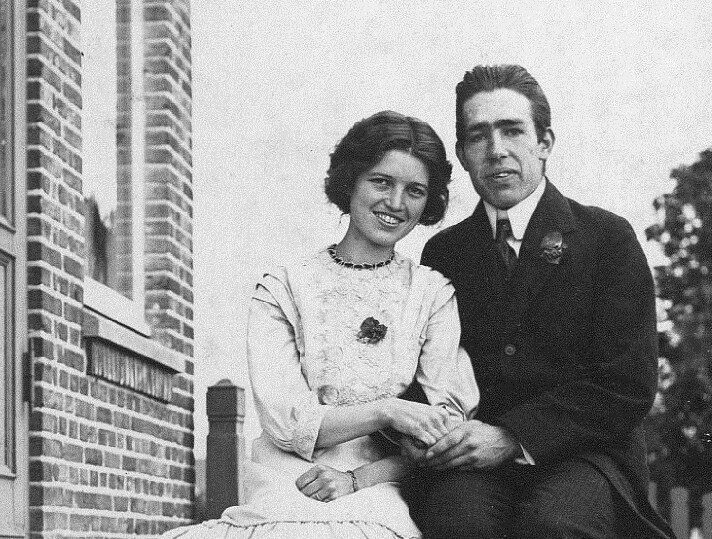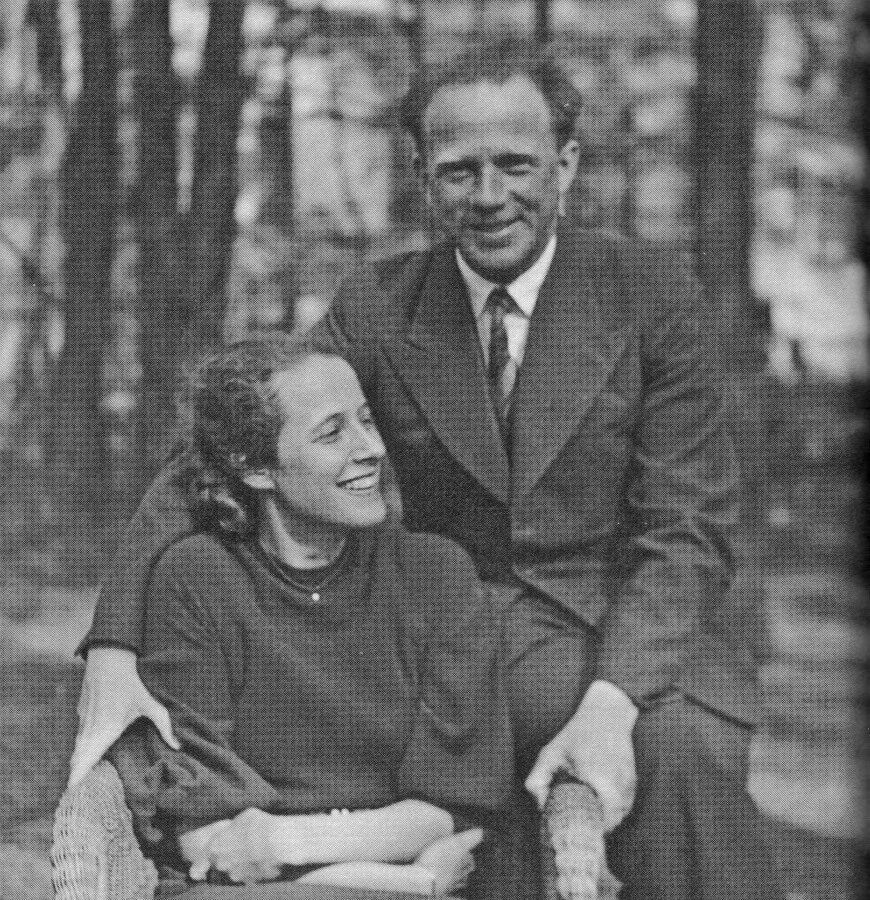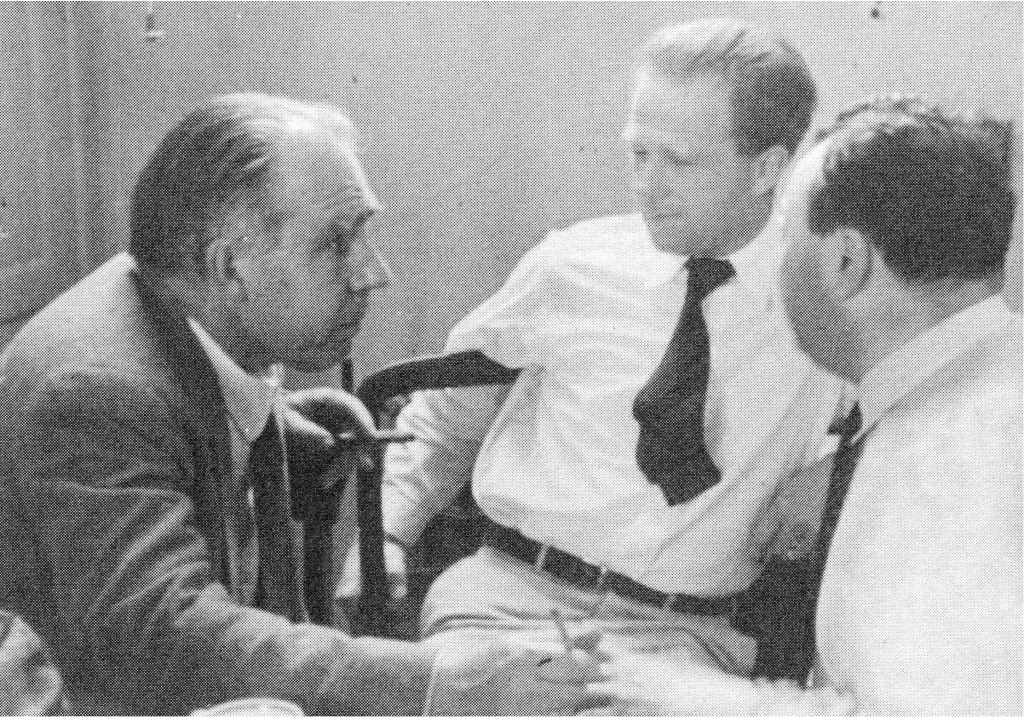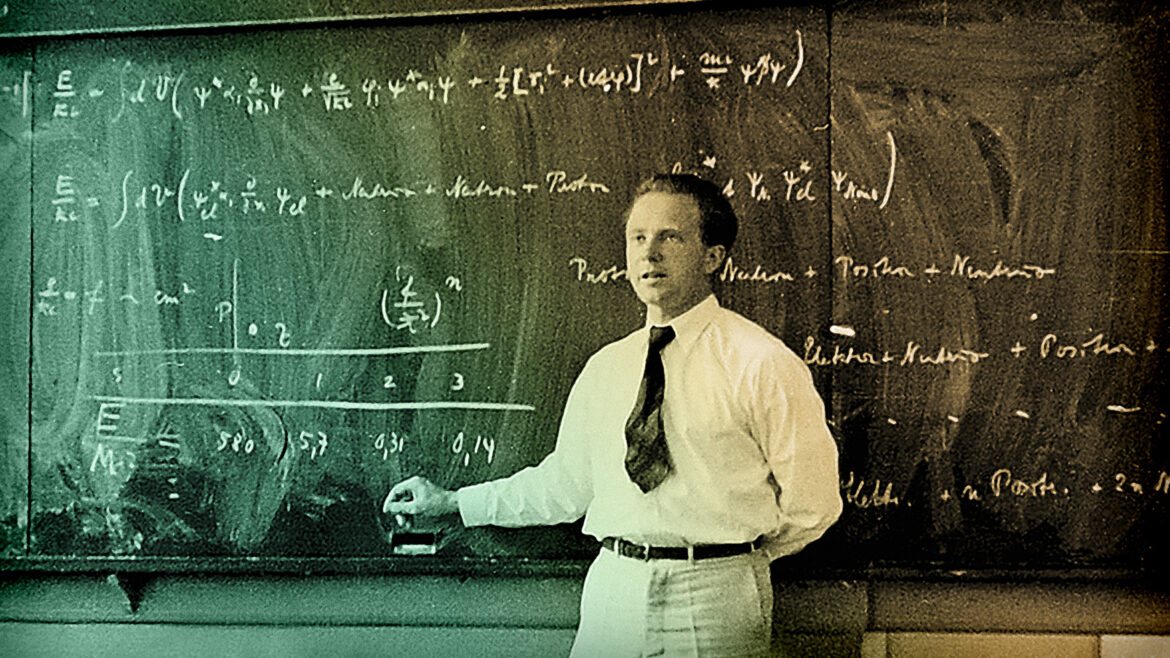The Lives of Werner Heisenberg and Niels Bohr
By Miriam Barbi
In this semester’s production of the play Copenhagen (1998) by Michael Frayn, the two renowned physicists and once-close friends, Werner Heisenberg and Niels Bohr, reunite during the height of World War II—finding themselves on opposite sides of the conflict. But who exactly were these historical figures? Have a look at the timeline of the key events in their lives, leading up to—and following—their much-debated meeting in 1941:
1885 – On October 7, Niels Bohr is born to the physiology professor Christian Bohr and his Jewish wife Ellen (born Adler) in Copenhagen.
1901 – On December 5, Werner Karl Heisenberg is born in Würzburg to August Heisenberg, a university professor and Byzantinist.
1911 – Bohr earns his doctorate with a thesis on the electron theory of metals.
1912 – Niels Bohr gets married to Margrethe Nørlund. The couple will have six sons, two of whom die young. Their son Harald, born with severe mental disabilities, is placed in an institution at age four and dies around the age of ten from meningitis.

1913 – Bohr develops his model of the atom (Bohr model), which provides a first successful description of atomic physics.
1916 – Bohr becomes a professor of physics at the University of Copenhagen.
1919 – Too young for military service in World War I, Heisenberg volunteers with a paramilitary group during the suppression of the Munich Soviet Republic, though he does not participate in active combat.
1920 – Bohr founds the Institute of Theoretical Physics in Copenhagen (later named the Niels Bohr Institute) and serves as its director until his death in 1962. Heisenberg starts studying physics under Arnold Sommerfeld in Munich.
1922 – Heisenberg studies physics in Göttingen under Max Born. June 1922 marks the beginning of the friendship between Werner Heisenberg and Niels Bohr. Heisenberg meets Bohr during the “Bohr Festival” in Göttingen, where Bohr gives a lecture on his atomic model. Heisenberg dares to question Bohr’s model, whereupon Bohr invites him for a stroll across the Hainberg. In a letter to Ernest Rutherford, Bohr later describes Heisenberg as “ingenious and likeable.” In December of the same year, Bohr is awarded the Nobel Prize in Physics for his research into atomic structure.
1924–1925 – After a brief visit in spring 1924, Heisenberg follows Niels Bohr’s offer to come to Copenhagen on a scholarship. He stays in Copenhagen from September 1924 until April 1925. In June, while retreating to the island of Heligoland, Heisenberg achieves a first consistent theory of quantum mechanics.
1926–1927 – In the spring of 1926, Heisenberg returns to Copenhagen to work for Bohr. In the evenings, Bohr often visits Heisenberg’s room at the institute with a bottle of sherry. They spend most of their time discussing the implications of quantum mechanics. In early 1927, Heisenberg formulates his most important contribution to the debate on the interpretation of quantum mechanics (which arises in a dispute with Erwin Schrödinger): his “uncertainty principle.” In collaboration, Bohr and Heisenberg formulate the so-called “Copenhagen Interpretation,” a collection of views about the meaning of quantum mechanics. At the end of 1927, Heisenberg returns to Germany, where he works as professor at the University of Leipzig and head of the Theoretical Physics Institute in Leipzig. Heisenberg and Bohr continue to meet frequently.
1933 – Heisenberg receives the 1932 Nobel Prize in Physics for his work on quantum mechanics, most of which was done during his time in Copenhagen.
1934 – A tragedy strikes the Bohr family when Niels and Margrethe’s son, Christian, drowns during a sailing trip with his father and some friends in the Kattegat in an unexpected storm.

1936 – Werner Heisenberg marries Elisabeth Schuhmacher. They go on to have seven children. Under the Nazi regime, Heisenberg defends theoretical physics and opposes the dismissal of Jewish scientists under the Civil Service. Apart from that, he stays out of all political matters. As a result of his recognition and defense of the research findings of Albert Einstein and Lise Meitner, among others, Heisenberg is nevertheless treated with hostility. His appointment to the University of Munich is withdrawn due to the politically motivated rejection of theoretical physics. Despite offers of professorships in the United States, Heisenberg chooses to remain in Germany. He is subjected to an SS investigation and interrogated by the Gestapo but is eventually deemed “apolitical.” Heisenberg is advised to refrain from mentioning Einstein’s name and other Jewish physicists in his lectures; however, he is spared further hostility due to Himmler’s protection.
1939 – Bohr formulates a theoretical model for observations made by Otto Hahn and Fritz Strassmann, which were previously interpreted by Lise Meitner as nuclear fission. His insights are critical for its later technical utilisation.
1940 – Germany occupies Denmark and Norway. Denmark surrenders almost without resistance. Bohr, who lives in occupied Copenhagen, becomes actively involved in the resistance.

1941 – Heisenberg is appointed director of the Kaiser Wilhelm Institute for Physics in Berlin and professor at the University of Berlin. He leads the German Uranium Project under the Army Ordnance Office, investigating the potential military applications of nuclear energy. While visiting German-occupied Copenhagen to give a lecture at a German cultural institute, Heisenberg arranges a meeting with his former mentor. The meeting takes place sometime during the week of September 15–21, 1941. There is no contemporary record of what was said during their private meeting, but afterwards, their friendship grows cold. The drafts of unsent letters from Bohr to Heisenberg in the mid-1950s in hindsight give at least some insight: According to Bohr’s recollection, Heisenberg explained that he and a team of colleagues were pursuing the development of a nuclear chain reaction based on uranium fission. He also remarked that such research could eventually result in a nuclear weapon.
1943–1945 – Bohr escapes Denmark with his family on a fishing boat to Sweden and emigrates to the USA via England. There his research into the nuclear fission of uranium is an essential prerequisite for the construction of the atomic bomb, which Bohr and his son Aage help to develop with the Atomic Energy Project. At the beginning of May 1945, Heisenberg is one of the last leading German nuclear physicists to be arrested.
1945 – On August 6 and 9, 1945, atomic bombs are dropped on Hiroshima and Nagasaki. The war ends shortly thereafter. After time in detention in France and Belgium, Heisenberg and other German physicists are interned at Farm Hall in England, where their conversations are secretly recorded. It becomes clear that they didn’t build an atomic bomb—whether from technical limits or lack of intent.


Schreibe einen Kommentar